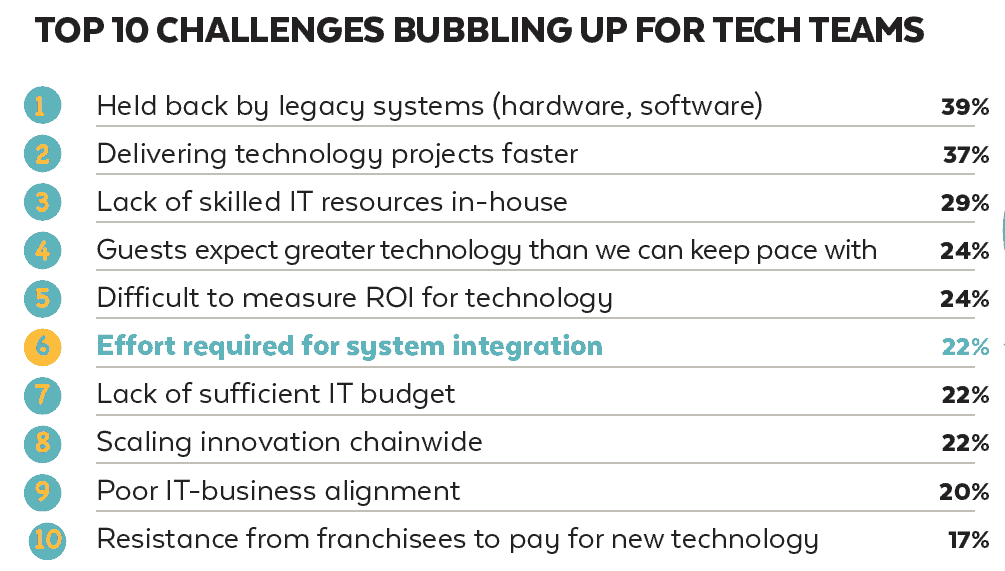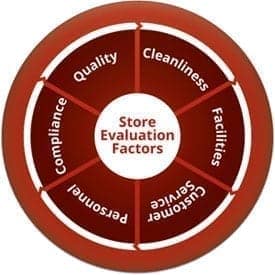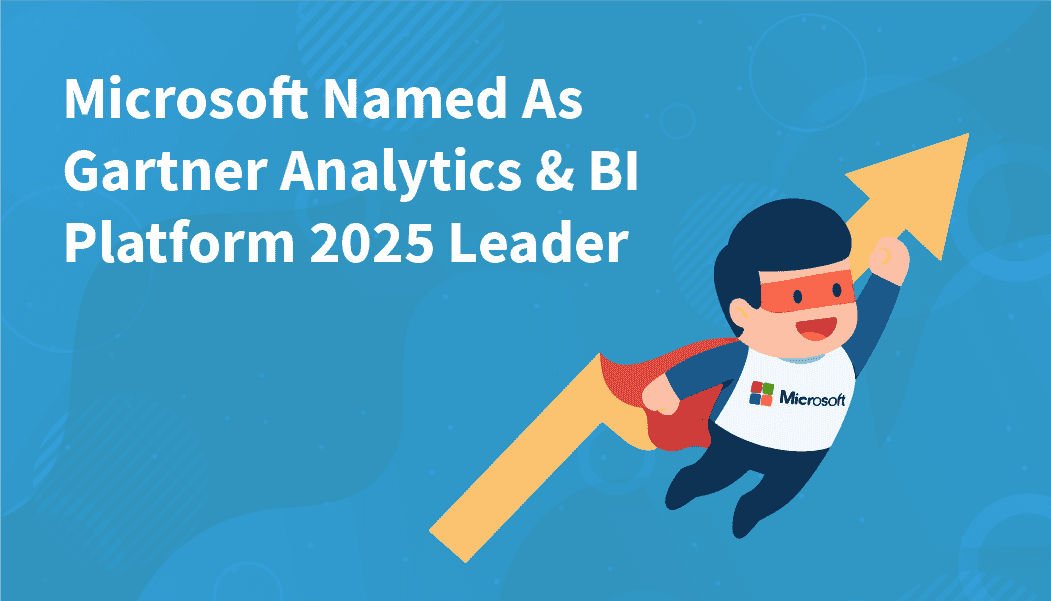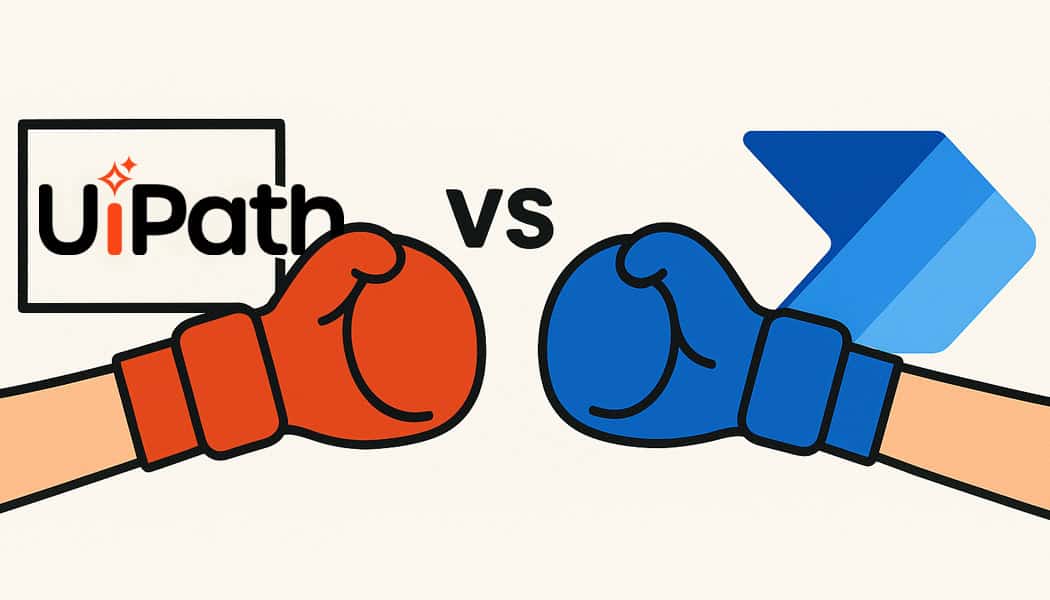In-Store Restaurant Operations – Modernized and Measured
You’ve been put to the test to prioritize safety of your guests over profits. So how do you keep your restaurant chain thriving during the pandemic and economic downturn?
The in-store area is the core of the restaurants operations. An operator’s first priority is ensuring the daily processes are running smoothly. This includes proactively measuring and monitoring the restaurant performance and making the necessary adjustments to keep processes in tune.
Another important aspect is the customer interaction, and how to enhance the customer experience at the restaurant. A well run restaurant will combine smooth efficient operations with a fantastic customer experience.
Let’s take a look at a few ways this can be achieved.
Implement the latest in point of sale and back office technology
An efficient and reliable point of sale/back office system (POS/BOS) is the hub of all data captured in the restaurant and can provide important features to assist operations when applied with enforcement and policy to appropriately use them.
Among respondents from Hospitality Technology magazine’s Restaurant Technology Study, point-of-sale hardware upgrades account for the largest piece of tech spending (at 44%), with 29% of restaurants investing in back-of-house software. In fact, the top challenge for tech teams was reported as legacy systems holding them back (hardware and software).
It is important you choose the right POS/BOS technology for your company and be very selective of any customizations, if any. The more modifications you make to a system, the more testing and quality assurance you will need to ensure a successful roll-out.
Make sure any customization made is aligned with a critical need for the business, and then work with your vendor to incorporate this feature into their core product.
Here are 4 key features POS and Back Office systems should include:
1. Mobile Ordering and Payment
People have more access to cell phones than a toilet – therefore having the ability to receive and manage mobile orders, promotions, loyalty programs and coupons is essential. Your POS should support mobile orders and mobile payments.
In addition to support of receiving mobile orders and payment, the POS itself can be mobile enabled. A mobile version of the POS can improve order-taking accuracy, and allow you to speed up service times by reducing bottlenecks. For example, a mobile POS order-taker using a tablet can help alleviate drive-thru congestion by taking orders from cars earlier in the drive-thru lane.
Another aspect is mobile BOS functionality. Real-time store performance data via mobile device can alleviate the pressure of operators needing to be in the store 24×7, helping regional or area managers monitor store performance anytime, anywhere. For example, see our case study on the deployment of MicroStrategy mobile business intelligence with Chipotle.
2. Forecasting and Alerts
The BOS should do more than collect and report data from the POS – it should be proactive and use this data to provide forecasting and alerts. Such analytics as upcoming or current promotions, or the effect of weather and traffic on sales, provide accurate forecasting so you have the appropriate labor scheduled and the right inventory ordered.
Alerts, monitoring, and reporting should be incorporated to track and improve forecasts and help identify issues such as inventory levels of an important item, or significant variations from model food cost. Employee performance issues such as scheduled time versus actual labor times can also trigger an alert.
3. Sales Analytics
Trends in product mix and customer demand become clearly pronounced when sales analytics are used in conjunction with loyalty programs and social media.
What promotions are working? What customer segments are your best? And your worst? How effective was the marketing campaign? Your acquired Big Data can decipher these answers – using customer purchase history, day-part sales and payment types, to name a few. This data can then be further analyzed to determine how to grow sales using data-driven insights to expand or pull back certain efforts.
Analytics and Big Data have a tremendous impact to marketing and the customer experience. Learn more about data & analytics in the cloud for restaurants >
4. Collection and Integration of Data to the Central Hub
Your POS/BOS needs to feed above-store systems such as accounting, supply chain, marketing and human resources. In addition, integration with loyalty programs, promotions, and other channels is key to providing a complete customer experience.
Systems that support advanced options such as web services and hosting in the cloud can provide more flexibility when considering integration options. Service oriented architectures are adaptable, allowing for faster integration of additional systems or data.
A cloud-based solution can also mitigate some of your risks. Since your system or data is in the cloud you don’t need to maintain as much physical infrastructure in the store. Also, in the case of disaster recovery, a cloud-based solution allows for faster recovery times.
Monitor and Measure Stores and Staff
In order to maintain the improvements to operations made through POS/BOS technology, processes need to be followed. These processes need to be regularly tested and evaluated to ensure long-term success. Monitoring and measuring your store and staff performance is an insightful way to keep things in check.
 Store Evaluations & Reviews
Store Evaluations & Reviews
Evaluations and reviews can highlight anything from employee retention to kitchen cleanliness. The evaluation should use clearly defined metrics so operators understand how their performance will be scored and what factors are being measured.
The ability to drill-down on these metrics is critical into understanding the root cause of strong or poor performance in various areas. For example, if a store has high employee retention, is this related to more effective labor scheduling or better hiring practices? If a store has poor speed of service, can it be attributed to lack of order accuracy, slow prep times, or other inefficiencies?
Combining measurement and regular evaluations with analytics to provide deeper insight can help operations correct issues and maintain great results.
Employee & Customer Evaluations
The same evaluation applied to the overall store performance can be equally applied to employee and customers as well. Employee evaluations should be conducted regularly using the same rigor of understanding the root cause of high or low performance levels.
In the case of customers, regular mystery shops and customer surveys should be conducted to gain important customer feedback. Later I will detail some key channels such as social media and loyalty programs that can provide further customer insight.
Properly managing the store operations is a major factor in a successfully run multi-unit restaurant. Utilizing best practices in technologies such as the POS/BOS, mobility, and analytics can help managers improve their operations and better serve your customers. Make sure to provide the adequate training and processes around deploying these technologies so you are well positioned to take advantage of them, and gain an edge on your competitors.
Looking for more on restaurant technology?
Explore more insights and expertise at Smartbridge.com/restaurant
There’s more to explore at Smartbridge.com!
Sign up to be notified when we publish articles, news, videos and more!
Other ways to
follow us:



 Store Evaluations & Reviews
Store Evaluations & Reviews


